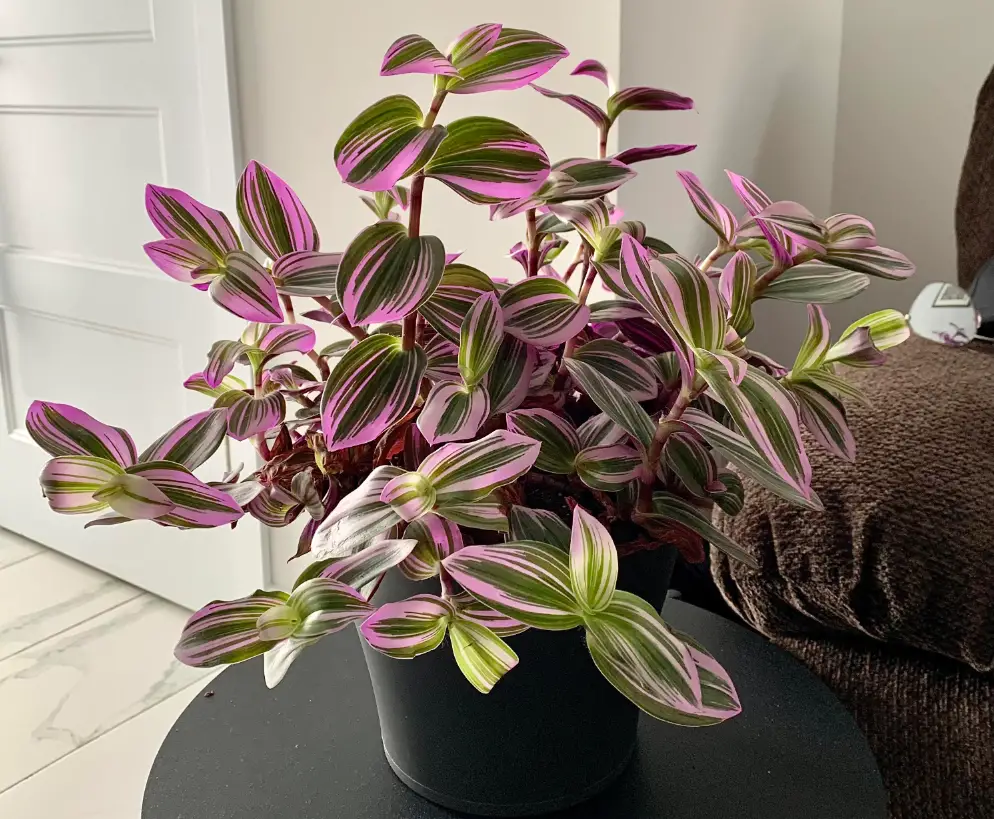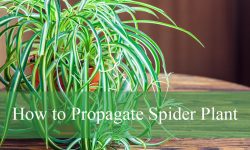Wandering Jew plants, known for their vibrant foliage and easy care, are a favorite among houseplant enthusiasts. Though the term “Wandering Jew” refers to several species within the Tradescantia genus, it often points to popular varieties like Tradescantia zebrina, Tradescantia fluminensis, and Tradescantia pallida. Whether you’re growing these striking plants indoors or outdoors, this comprehensive guide will help you provide the best care and conditions to thrive.
Let’s dive into the essential Wandering Jew plant care tips, ensuring your plant flourishes for years to come.
Overview of Wandering Jew Plants

Despite being recognized as an invasive species in certain regions when grown outdoors, Wandering Jew plants excel as indoor vining plants due to their rapid growth and adaptability. These plants exhibit a trailing growth habit, which makes them ideal for hanging baskets or containers, offering both beauty and practical appeal for any space.
Common Varieties of Wandering Jew Plants
There are several different varieties of the Wandering Jew plant, each with distinct characteristics:
- Tradescantia fluminensis: Known for its classic green leaves and delicate white flowers, this variety is often seen in gardens and homes alike.
- Tradescantia zebrina: This variety, with its striped purple and silver leaves, is often referred to as the Zebra Plant due to its appearance.
- Tradescantia pallida: Also called Purple Heart, this variety boasts rich purple leaves and light pink flowers, making it one of the most popular choices among indoor gardeners.
Appearance and Characteristics
The Wandering Jew plant typically grows up to 6 feet in length when provided with the right environment. Its striking, heart-shaped leaves are often variegated with purple, silver, and green hues, giving the plant an attractive sheen. These plants also produce small, three-petaled flowers in shades of violet or white.
Ideal Growing Conditions for Wandering Jew Plants
Providing the optimal environment is key to maintaining the health and vibrant appearance of your Wandering Jew plant. Here’s what you need to know:
Light Requirements
Wandering Jew plants thrive in bright, indirect light. Direct sunlight can scorch the leaves, but insufficient light can cause the vibrant colors to fade. Place your plant near a window where it can receive plenty of light but is shielded from direct rays.
If you’re growing your Tradescantia outdoors, make sure to place it in an area with dappled sunlight. This will encourage healthy growth without risking sunburn.
Temperature and Humidity
The ideal temperature range for Wandering Jew plant care is between 60°F and 80°F. They are not frost-tolerant, so avoid exposure to cold temperatures. If you’re growing your plant in USDA hardiness zones 9-12, light frost might not kill the plant, but it will die back and regrow in the spring.
As for humidity, these plants appreciate higher humidity levels, with 70% being ideal. If you’re growing your plant indoors, consider using a plant humidifier or misting the plant regularly to keep the humidity up, especially during dry months.
Soil Requirements
For Wandering Jew plants, a well-draining soil mix is essential to prevent root rot. While a standard houseplant potting mix works fine, improving the soil with extra organic matter will promote healthier growth.
You can make your own soil mix by combining equal parts of:
- Perlite or coarse sand (for drainage)
- Peat moss or humus (for moisture retention)
- Garden soil
Aim for a slightly acidic soil with a pH of 5 to 6, which is ideal for these plants.
Watering Needs
When it comes to watering, keeping the soil slightly moist without waterlogging is key. Allow the top ½ inch of soil to dry out before watering again. Avoid letting the soil dry completely or become overly saturated, as both extremes can stress the plant.
Wandering Jew plants are fairly tolerant of varying moisture levels but do best when kept consistently hydrated. Be sure to use well-draining pots to avoid water accumulation, which can lead to root rot.
Fertilizing Your Wandering Jew Plant
Feeding your Wandering Jew plant with the right fertilizer will promote vibrant growth and colorful foliage. During the growing season, which is typically in spring and summer, use a water-soluble fertilizer at half strength every two weeks. Diluting the fertilizer prevents nutrient burn, which can damage the delicate leaves.
For long-term care, you can also apply a slow-release fertilizer once a year to provide a steady supply of nutrients.
Repotting Wandering Jew Plants
As your Wandering Jew plant grows, it will eventually need to be repotted into a larger container. When you notice the roots crowding the pot or the plant looking cramped, it’s time for a new pot.
Choose a pot that is 1-2 inches larger in diameter than the current one. Fill it with fresh soil, ensuring proper drainage, and gently transfer the plant. Be sure to firm the soil around the root ball, leaving about 2 inches of space below the pot’s rim to allow for watering.
Repotting not only gives your plant more room to grow but also refreshes the soil, providing the plant with essential nutrients.
Pruning and Propagating Wandering Jew Plants
Pruning
Pruning is important to keep your Wandering Jew plant looking bushy and healthy. These plants have a tendency to become leggy over time, especially if not pruned regularly.
To prune, simply cut back the stems and pinch off the growing tips. This encourages the plant to produce two new shoots from the pinched area, resulting in a fuller, bushier appearance.
Propagation
Don’t throw away the cuttings from pruning! Wandering Jew plants are incredibly easy to propagate. Simply place the cuttings in moist soil or water, and they will develop roots in just a few weeks. Once the roots have grown sufficiently, transplant the new plant into its own pot.
Propagation not only helps you multiply your plant collection but also ensures you always have healthy replacements in case of plant decline.
Common Pests and Diseases of Wandering Jew Plants
Despite being hardy, Wandering Jew plants are prone to a few pests and diseases that you’ll need to watch out for:
Pests
- Spider mites are the most common pest, especially in dry environments. They thrive in warm, dry conditions and can be countered by keeping humidity high or regularly misting the plant.
- Aphids also pose a threat, feeding on the plant’s sap. Neem oil or insecticidal soap can help eradicate these pests. If your plant is indoors, consider moving it outside for treatment.
Diseases
- Root rot is a significant concern for Wandering Jew plants, especially if overwatered or planted in poorly draining soil. To prevent root rot, ensure your plant’s soil is well-draining and avoid overwatering.
- Leaf spot, botrytis, and powdery mildew are common fungal diseases that can affect Tradescantia plants. These appear as discolored spots or a white powdery substance on the leaves. Remove affected foliage and treat the plant with a fungicide if necessary.
Troubleshooting Wandering Jew Plant Issues
Here are some common problems you may encounter while caring for Wandering Jew plants:
- Faded or yellow leaves: This often indicates too much direct sunlight or overwatering. Move the plant to an area with bright, indirect light and adjust your watering routine.
- Leggy growth: This occurs when the plant isn’t receiving enough light. Trim back leggy stems and move the plant to a brighter location.
- Drooping leaves: Usually a sign of underwatering, though overwatering can cause similar symptoms. Check the soil moisture and adjust your watering schedule accordingly.
Conclusion
With its striking foliage and relatively simple care requirements, the Wandering Jew plant is a fantastic addition to any indoor or outdoor space. By providing the right amount of light, water, and occasional pruning, your Tradescantia will thrive, adding a touch of beauty and greenery to your home. Follow this Wandering Jew plant care guide closely, and you’ll enjoy its vibrant colors and lush growth for many years to come.






